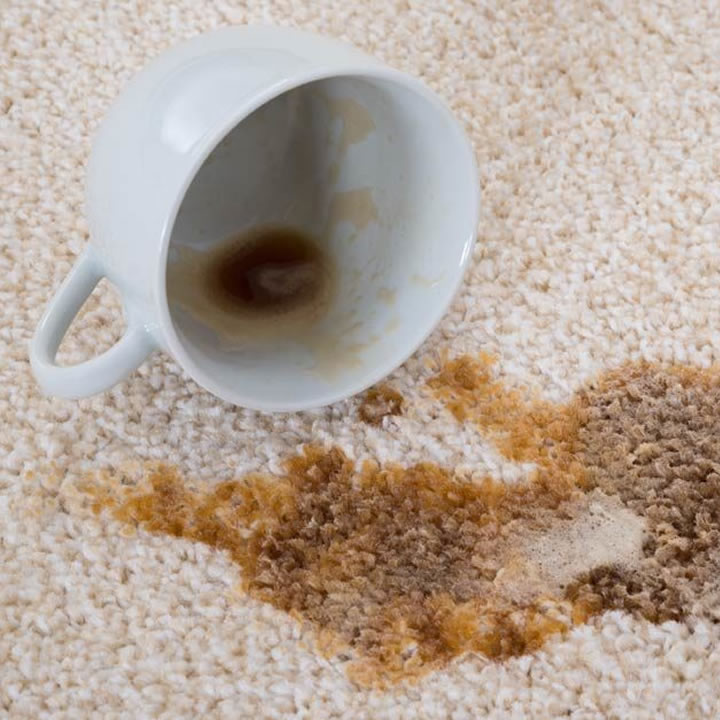Have you ever looked down at your plush, cozy carpet, only to spot a stubborn stain that refuses to budge?
Your once immaculate flooring now serves as a constant reminder of a coffee spill mishap or an unfortunate pet accident. Despite trying every trick in the book, it seems impossible to eradicate.
But is it really time to replace the carpet entirely? Don’t lose heart just yet!
Whether it’s a splash of red wine, a drop of oil, or an unsightly pet stain, there are methods to help reclaim your carpet’s original splendor. A little knowledge about the types of stains and corresponding cleaning techniques can indeed make a world of difference.
Professional Carpet Cleaners to the Rescue
When it comes to tough carpet stains, don’t hesitate to turn to professionals. Equipped with advanced cleaning techniques and high-grade equipment, they are capable of efficiently handling even the most obstinate carpet stains.
Carpet specialists, with their depth of knowledge and experience, ensure an effective yet gentle approach to stain removal.
The best part is there are reliable and accessible professionals in your area that can take a look at your rugs, evaluate their condition, and employ suitable methods to restore their original beauty.
Nevertheless, it won’t hurt to try and tackle the problem on your own. Armed with the right tools and approach, you might succeed in keeping those tough stains at bay. So, there are some valuable tips to guide you through the process of effective carpet stain removal.
Understanding Your Stain
Different stains originate from various sources, and understanding this could be half the battle won.
You wouldn’t employ the same method to remove a coffee stain as you would for a paint splatter, right? Each stain, whether from coffee, oil, pet urine, wine, or ink, has a unique origin and requires a tailored cleaning approach.
Oil-Based Stains: Oil-based stains, such as those from grease or makeup, often prove more stubborn than water-based stains like juice or coffee. Handling these resilient stains may necessitate the use of specialized cleaning agents.
Protein-Based Stains: Protein-based stains, like blood or pet accidents, require careful handling to prevent them from settling deeper into the carpet. Cold water is your first line of defense against these stains.
Hot water, on the other hand, can set protein stains, making them more challenging to remove. A gentle detergent solution can break down the protein and lift the stain from the fibers.
Dye-Based Stains: Stains from sources like wine or ink are dye-based and can be particularly challenging as they have a high tendency to set into carpet fibers. For such stains, you might require a solution that targets the dye, such as a mixture of white vinegar, dish soap, and water.
Acid-Based Stains: Certain stains are acid-based, such as those from coffee or tea. These require a slightly different approach. A solution of one part white vinegar to two parts water can help neutralize the acid and lift the stain.
By identifying and understanding the nature of your stain, you’ll be better equipped to treat it effectively.
Treating The Stain
The longer a stain settles, the deeper it seeps into the carpet fibers, becoming progressively more challenging to eliminate. So, the moment you notice a stain, act quickly. A delay might not only make the stain more stubborn, but it can also risk becoming a permanent fixture on your carpet.
The key to treating stains lies in your technique. Despite your immediate instincts, resist the urge to rub the stain. Instead, gently blot it with a clean, dry cloth.
Rubbing can result in spreading the stain further into the carpet, increasing its coverage area, and potentially damaging the carpet fibers, leading to a worn-out patch that stands out just as much as the stain itself.
When blotting, always work from the outside of the stain towards the center to prevent the stain from spreading outward.
Choosing The Right Cleaning Solution
Selecting the correct cleaning solution is crucial in your journey toward a stain-free carpet. As you’ve identified, each type of stain responds differently to various cleaning agents. Not all cleaners are created equal; the secret lies in matching the right solution to the specific stain type.
If you’re dealing with an acid-based stain, like coffee or tea, a vinegar and water solution can work wonders in neutralizing and lifting the stain. Similarly, a mixture of white vinegar, dish soap, and water might be your go-to option for dye-based stains like wine or ink.
However, before applying any solution, it’s paramount to conduct a spot test first. Even the most recommended cleaning solution can potentially cause discoloration or damage to the carpet fibers if unsuitable for your specific carpet material.
Apply a small amount of the cleaning solution to an inconspicuous part of your carpet, such as a corner or under a piece of furniture, and let it sit for a few minutes. If there’s no discoloration or visible damage, you’re good to go.
With the right cleaning solution and these precautionary steps, you’re well-equipped to tackle those stubborn carpet stains.
Conclusion
Tackling stubborn carpet stains doesn’t have to be a daunting task. With a clear understanding of the nature of stains, effective treatment strategies, and proactive preventative measures, you can keep your carpet spotless.
Although it may require a bit of diligence, maintaining the allure of your carpet is entirely achievable. These guidelines will equip you to manage and even prevent those unwelcome carpet stains effectively.

